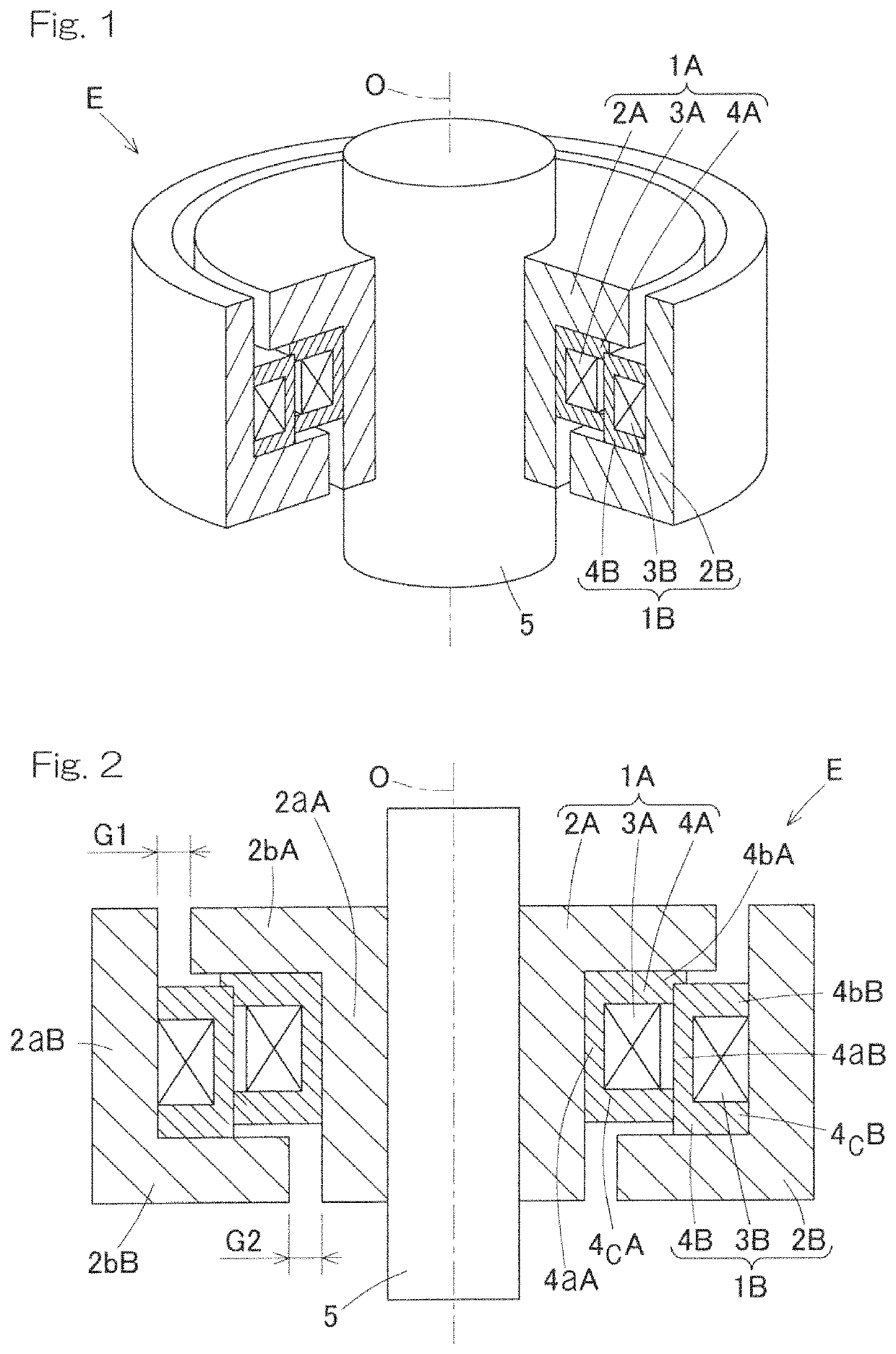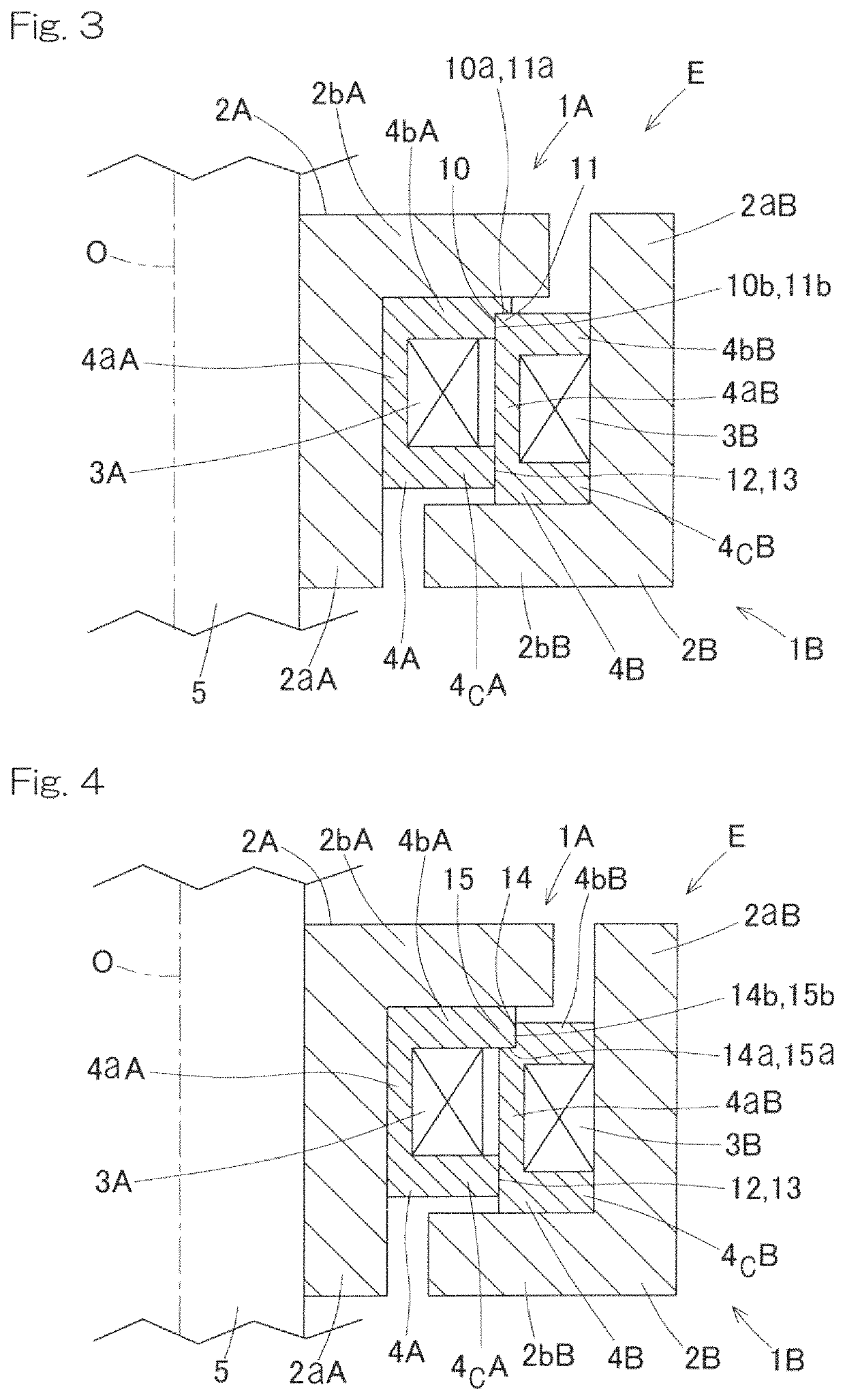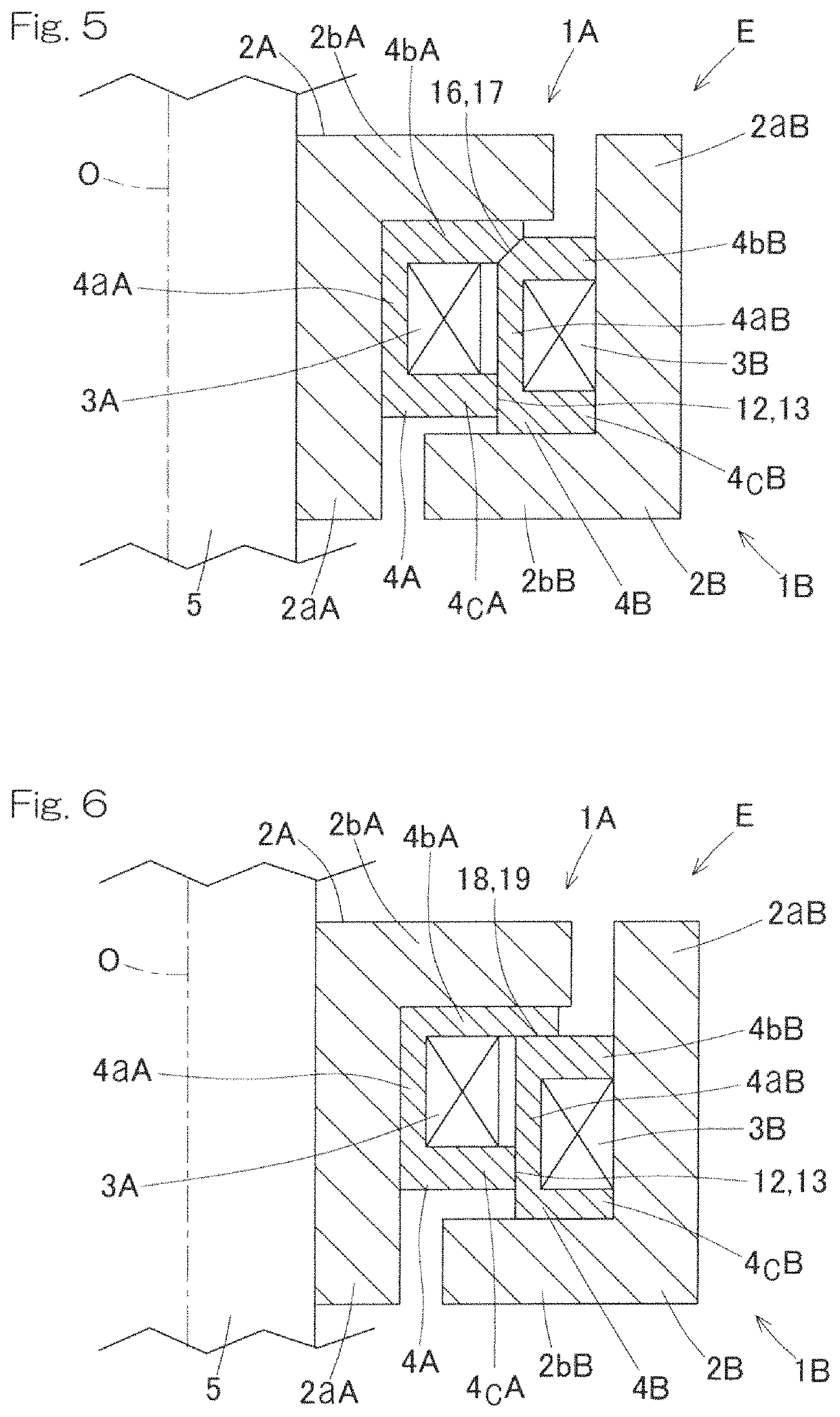Electric transmission device in relatively rotating parts
a technology of electric transmission device and rotating part, which is applied in the direction of inductance, magnetic circuit shape/form/construction, artificial legs, etc., can solve the problems of chipping of the core of the magnetic element or peeling of the coating of the wire of the coil
- Summary
- Abstract
- Description
- Claims
- Application Information
AI Technical Summary
Benefits of technology
Problems solved by technology
Method used
Image
Examples
first embodiment
[0052]An embodiment of the present invention will be described with reference to FIG. 1 to FIG. 3. FIG. 1 is a partially cutaway perspective view of an electric transmission device in which the electric transmission device is assembled to a shaft. FIG. 2 is a longitudinal sectional view of the electric transmission device. The electric transmission device E is configured to be provided at relatively rotating parts of a mechanical apparatus such as a later-described assist suit. The electric transmission device E is related to a transformer. The device includes a pair of first and second magnetic elements 1A and 1B capable of rotating relative to each other about the same axis O. These first and second magnetic elements 1A and 1B each include a core 2A (2B), a coil 3A (3B), and a bobbin 4A (4B). The coils 3A and 3B of both magnetic elements 1A and 1B are located at the inner and outer sides in a radial direction, respectively, and are magnetically coupled to each other. The magnetic...
second embodiment
[0068]In the configuration of the electric transmission device shown in FIG. 4, in contrast to the configuration in FIG. 3, an annular cut 14 that is open outward in the axial direction and has a rectangular cross-sectional shape is provided on the inner circumferential surface of the flange portion 4bB of the second bobbin 4B. A corner portion 15 at the radially outer side of the flange portion 4bA of the first bobbin 4A is engaged with the annular cut 14. In this case, a surface 14a of the annular cut 14 that faces in the axial direction and a surface 15a of the corner portion 15 that faces in the axial direction function as the contact surfaces in the axial direction of the flange portions 4bB and 4bA, respectively. A surface 14b of the annular cut 14 that faces in the radial direction and a surface 15b of the corner portion 15 that faces in the radial direction function as the contact surfaces in the radial direction of the flange portions 4bB and 4bA, respectively.
third embodiment
[0069]In the configuration of the electric transmission device shown in FIG. 5, inclined surfaces 16 and 17 that are inclined in the radial direction and are slidably in contact with each other are provided on the outer circumferential surface of the flange portion 4bA of the first bobbin 4A and the inner circumferential surface of the flange portion 4bB of the second bobbin 4B, respectively. In this case, the inclined surfaces 16 and 17 function as the contact surfaces in the axial direction of the flange portions 4bA and 4bB, respectively. The inclined surfaces 16 and 17 also function as the contact surfaces in the radial direction of the flange portions 4bA and 4bB, respectively.
PUM
| Property | Measurement | Unit |
|---|---|---|
| magnetic | aaaaa | aaaaa |
| conductive | aaaaa | aaaaa |
| diameter | aaaaa | aaaaa |
Abstract
Description
Claims
Application Information
 Login to View More
Login to View More - R&D
- Intellectual Property
- Life Sciences
- Materials
- Tech Scout
- Unparalleled Data Quality
- Higher Quality Content
- 60% Fewer Hallucinations
Browse by: Latest US Patents, China's latest patents, Technical Efficacy Thesaurus, Application Domain, Technology Topic, Popular Technical Reports.
© 2025 PatSnap. All rights reserved.Legal|Privacy policy|Modern Slavery Act Transparency Statement|Sitemap|About US| Contact US: help@patsnap.com



